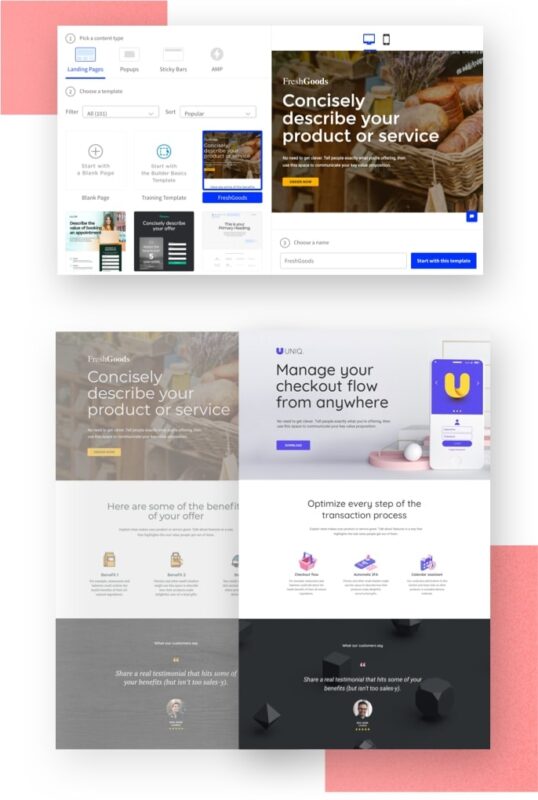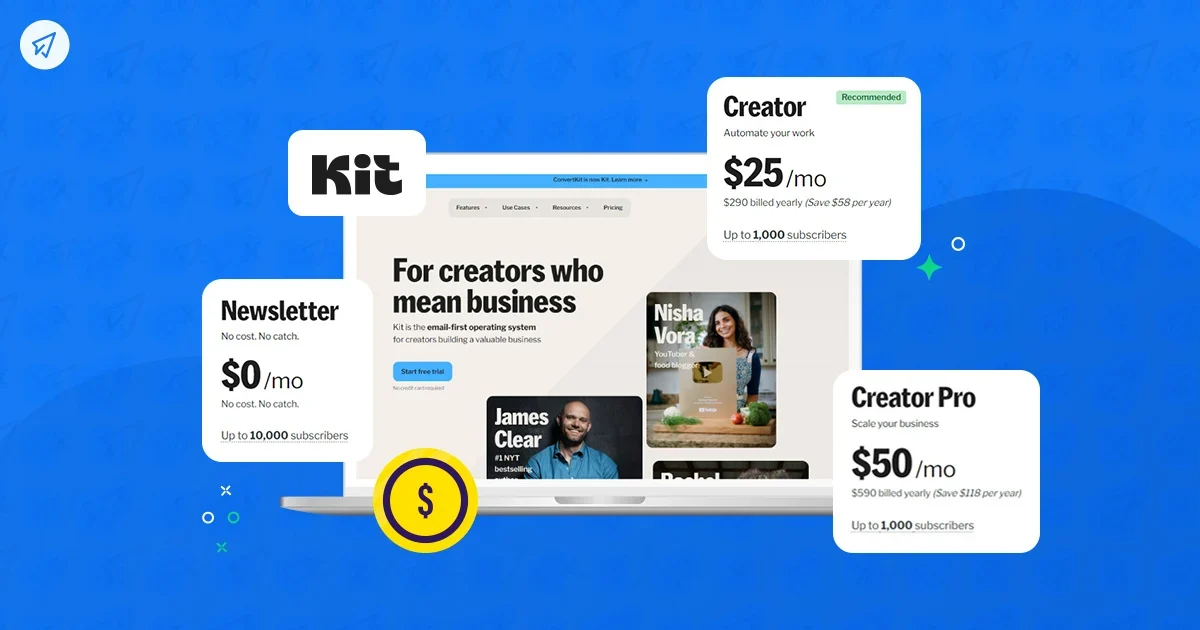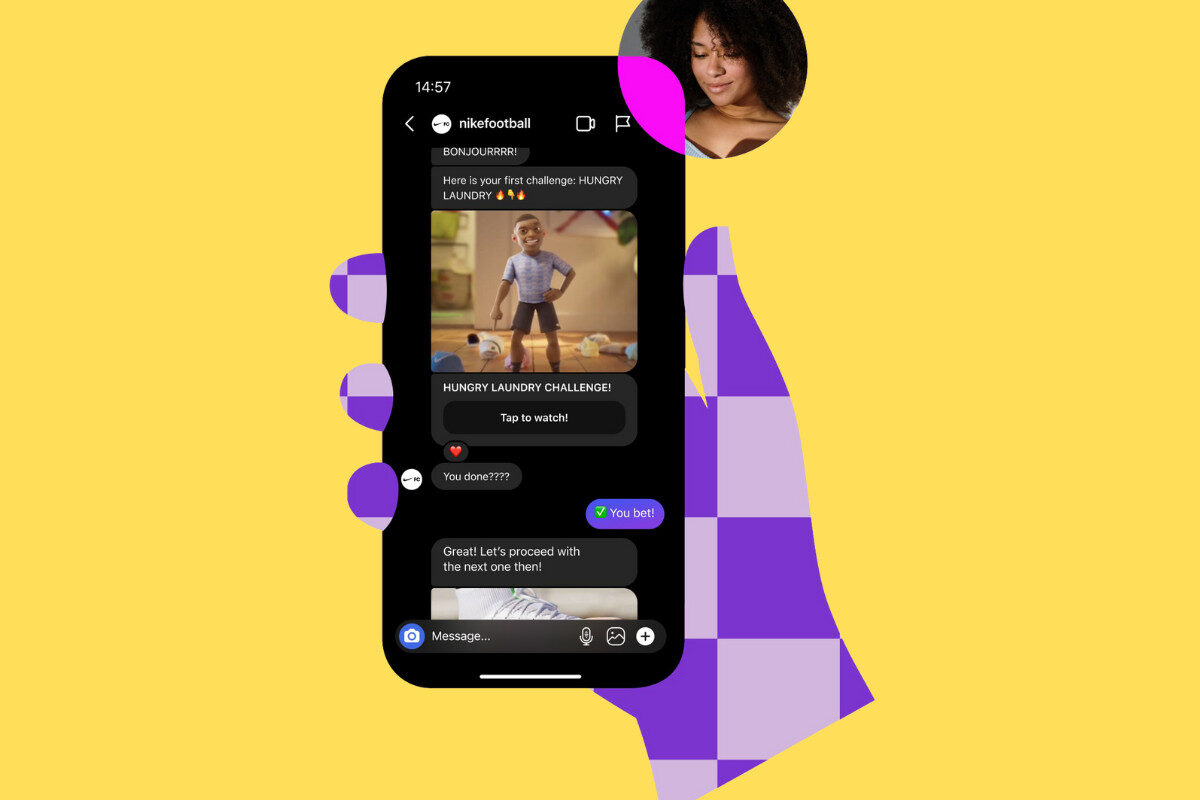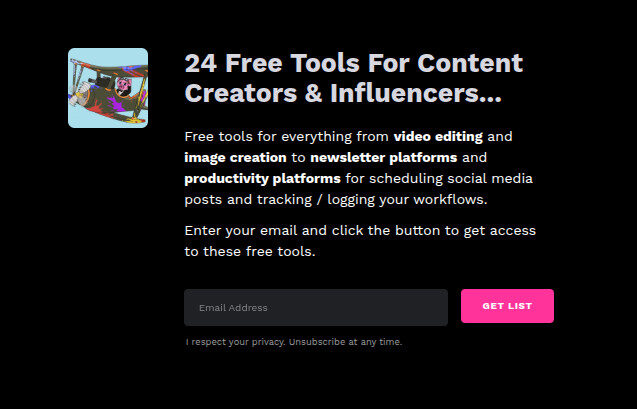If you want to build an email list, you need to find people that might be interested in what you do.
You need to be where they are, know what they want, and (this is non-negotiable) know more about your chosen subject than they do.
Most modern creators use social media platforms to grow their mailing lists: Instagram, TikTok, LinkedIn, X, the list goes on.
Or you can use a website/blog and social media (this is what I do).
The process from here is simple: you post updates, interact with people, share insights/hot takes.

Over time, if you’re adding value, you’ll start picking up followers.
Followers are great but they’re just the start.
A follower on X or Instagram isn’t truly yours; they belong to the platform and they can be taken away from you at any time, without warning.
To make them YOUR audience, you need to get them onto a platform you own.
And this is where your mailing list comes into the mix.
How Do I Get People To Join My Mailing List?

Getting someone to join your mailing list is hard. If you’ve never done it before, it might even seem impossible at first.
But it’s not and, like learning the guitar or driving a car, anyone can learn to do it.
Email marketing has been around for eons which means there are plenty of road-tested techniques that you can use to your advantage.
The most useful of all? Lead magnets.
This is where you give something away for free in exchange for a person’s email address.
Here’s how it works:
A person (your new, potential subscriber) has a problem, you have the solution. The cost of the transaction (or solving their problem) is their email address.
Lead magnets work like gangbusters when done right. Get good at these and you’ll never had to spend a dime on PPC advertising or social media ads.
Forget weak-ass CTAs like “sign up to my newsletter for more updates”, you won’t get anywhere with these.
Your lead magnet (and the supporting copy) needs to stand out from the noise, solve a very specific problem, and then deliver on the promise once downloaded.
Any weak points in this chain hammer conversion rates.
You’ll Need Tools But Keep It Bare Bones When You’re Just Getting Started

You then need a place to send your potential lead once you’ve piqued their attention with your killer copy, and this is where landing pages come into the mix.
If you’re only using social media and you don’t have a dedicated site, you have three options when it comes to landing pages:
- A dedicated landing page builder like Unbounce or Instapage and an email/newsletter platform.
- A tool like Manychat + an email/newsletter campaign.
- Or, an email marketing platform like ConvertKit (Kit) that does landing pages, email, and lets you sell digital courses.
If you’re literally just getting started and have basically no followers and no idea what you’re doing, I’d go with option 3.
It’s enough to see you through to your first 1000 email subscribers.
Kit gives you access to professionally designed landing pages you can edit and use right away.

You get easy-to-edit email templates, automations, and the ability to sell digital products too.
Tools like Manychat are super-useful for distributing lead magnets on Instagram, it does it via your DMs on autopilot, and quickly building out your email list.
I guarantee you’ve already seen this tool in action on X and Instagram.

A creator asks their audience to DM them a keyword, FREE GUIDE or something, and when someone does, Manychat kicks in and sends them the lead magnet.
Plenty of top creators and influencers use it but it is not cheap to run at scale.
For converting social followers into email subscribers, nothing comes even remotely close, so of course there’s going to be a premium attached.
If you’re just learning the ropes, though, leave Manychat out of the mix until you’re more established.
Keeping costs as low as possible should always be your goal, regardless of how much money you’re making.
How To Capture Attention, Get People To Subscribe

Think of your lead magnet like a first date: you want to make a good first impression.
It needs to give them an idea of what you’re all about and why they should stick with you.
It should build trust and, ideally, make them want to hear more from you.
It won’t work for everybody, but that’s life.
A good conversion rate on most lead magnets is anywhere from 20% to 40%, depending on the niche.
The Problem > Solution Technique For Lead Magnets
Your lead magnet doesn’t have to be complicated or over-engineered, it can be as simple as a spreadsheet or a downloadable PDF.
What it does have to do, though, is deliver a metric tonne of value.
You can use Canva, Google Docs, Microsoft 365. Whatever.
You can even get AI to create it for you but I’d avoid this unless you’re in full control.

To create a useful, engaging lead magnet that people will want you need to get yourself into a problem > solution mindset.
What problems does your audience have? Figure that out, solve it for them, and then give it away for free.
I worked with a client last year who ran a guitar teaching platform.
He wanted to capture more leads and convert them into paying students for his online courses.
His target audience: beginners looking to improve their playing.
We came up with something simple: a quick-to-make visual guide to the ideal amp settings for all the main guitar tones: clean, heavy, chug, mellow.
Most beginners have no idea how to dial in an amp’s settings, so this lead magnet converted like crazy.
I think he added maybe 150+ students to his online course community in 2 months, with 70% of them buying at least one course.
He was using Squarespace too, so I did literally everything inside the platform from building the landing pages to promoting his courses to his new subscribers.
Simple works.
And the problem > solution framework for lead magnets is about as simple (and effective) as it gets.


